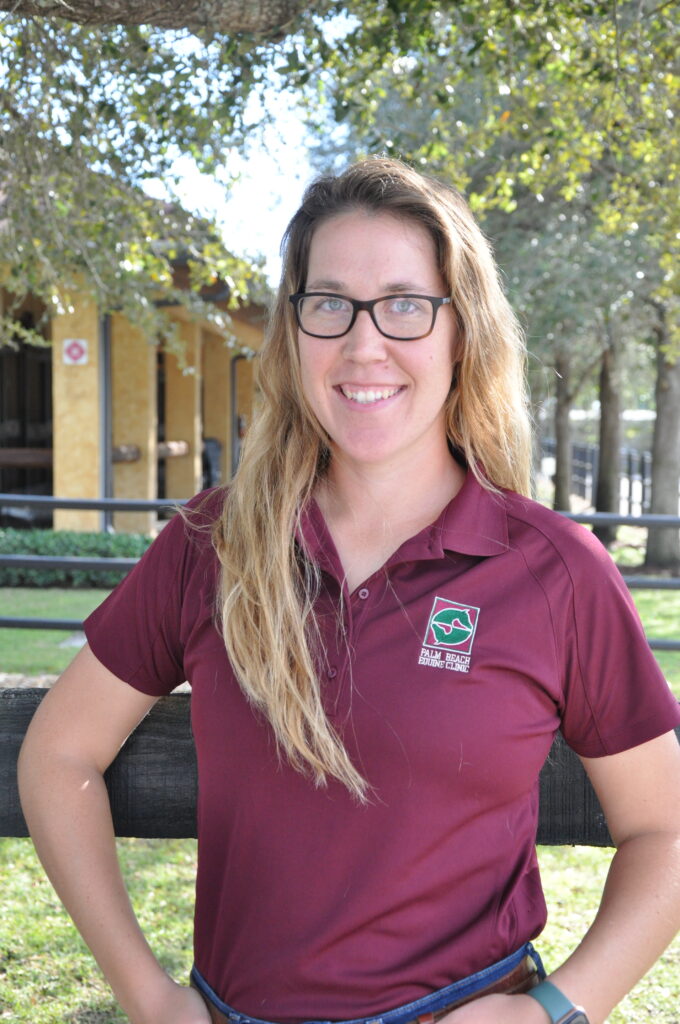Year: 2021

Anyone who has experience with horses is aware of the very real threat of losing a horse to colic or other gastrointestinal disease. But looking back on the history of equine death causes, colic still holds the same percentage as it did 20 years ago, standing firm as the second highest cause of death behind natural causes. Why hasn’t modern medicine decreased the chance of losing horses to colic? Why do we all still share the common fear of our horses colicking out of the blue, with little warning and minimal reliable strategies to prevent problems?
The answers to these questions remain a work-in-progress, but over the past 10 years, veterinarians and researchers have learned a lot about the role of the equine gut microbiome on all sorts of health outcomes, including colic, maldigestion, dysbiosis, and a myriad of other health problems.
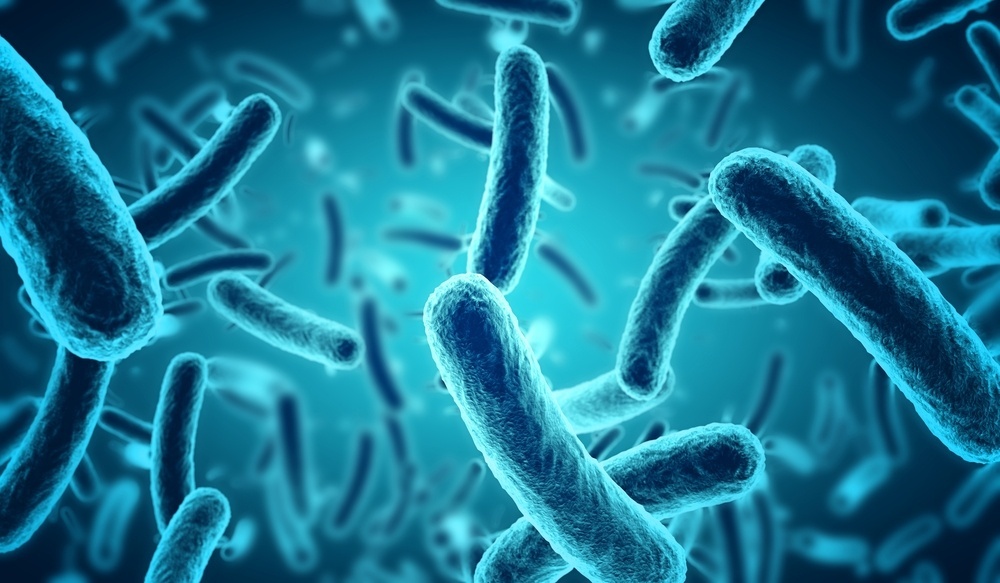
The equine gut microbiome is an ecosystem composed of quadrillions of microbes, including bacteria, fungi, and even viruses, which interact and coexist in the gastrointestinal tract and contribute to overall gut health and well-being. In equines, when the microbiome is disrupted in such a way that populations of beneficial bacteria and yeast have declined and/or populations of harmful pathogenic bacteria and yeast have increased, it is not unusual to see issues such as colic and colitis, laminitis, among other serious conditions.
Like each individual horse, each microbiome is unique; regional, dietary, and even breed and genetic differences can create diverse microbiomes, and varying degrees of digestive health. Even within one horse’s microbiome, the “top end” of the colon can be drastically different from the “bottom end” in terms of the population and diversity of microbes. The way all the organisms perform and act within the microbiome determines the functionality of the gut as a whole. Board-certified internal medicine specialist Dr. Peter Heidmann leads the Internal Medicine department at Palm Beach Equine Clinic and takes us on a deeper dive into the equine gut microbiome.
Microbiome and Nutrition
“When we’re working to improve overall GI health, we are basically trying to increase the population of ‘good bugs’ and crowd out the ‘bad bugs,” Dr. Heidmann remarked. The combination of probiotics, prebiotics, and diet are all key factors that influence what happens on the inside of a horse’s gut. According to Dr. Heidmann, a well-balanced diet is most important, but the sources of nutrients also play a huge role in promoting gastrointestinal health.
“Probiotics can limit lactic acid production and prevent huge swings in pH in the cecum. This happens through many pathways, but largely by encouraging fiber fermenters over bacteria that like to gobble sugars and produce lactic acid,” he said. “Prebiotics provide additional, non-starch nutrients and are meant to support healthy flora, or microbes. Prebiotics also limit the likelihood and severity of dysbiosis, or microbial imbalance, when the diet changes, like what can happen following sudden exposure to too much starch-rich feed.”
Excessive amounts of starch-rich grains can reduce populations of healthy flora, decrease the types of bacteria that are present in the colon, and also promote overgrowth of unhealthy flora. In turn, overly homogenous populations limit a horse’s resilience to stress, dietary changes, and other unpredictable changes such as those in weather.

Oats and other starch-rich grains cause increases in propionic acid-producing bacteria, while hay-only diets increase acetic acid-producing flora, and therefore promote more diverse and stable populations of beneficial bacteria and yeasts. On the flipside, feeding hay and no grain means the nutrients are being digested much more slowly and will promote more diversity and stability of flora populations.
“At the same time, some ‘good’ bugs are also decreased when a hay-only diet is fed, especially ones that rely on easy-to-digest starchy grains,” noted Dr. Heidmann. “One type of organism, the Lachnospiraceae, is among the most prevalent type present in a healthy horse’s hindgut, and its population also diminishes when grain is not being fed.”
Ultimately, some easily digestible concentrate feeds promote healthy bacterial populations and release lots of energy quickly, yet it is fairly easy and risky to over-do the easily digestible feed. Not only do abrupt changes in diet increase the risk of upsetting a horse’s healthy microbiome, but feeds that are high in carbohydrates can also promote gas formation, lactic acidosis, and other types of colic. “Simply put, garbage in equals garbage out,” Dr. Heidmann explained.
Other Stressors to the Microbiome
Aside from what goes into the horse, there are other factors that determine the behavior of the microbiome and the overall functionality of the gut. Genetic makeup almost certainly plays a role in the way organisms manage the nutrients going in and, in turn, impacts the horse. Stress is another significant factor that definitely has a relationship with the gut, though it remains difficult to draw clear lines of “cause and effect” when studying all the ways that stress affects a horse’s gut health.
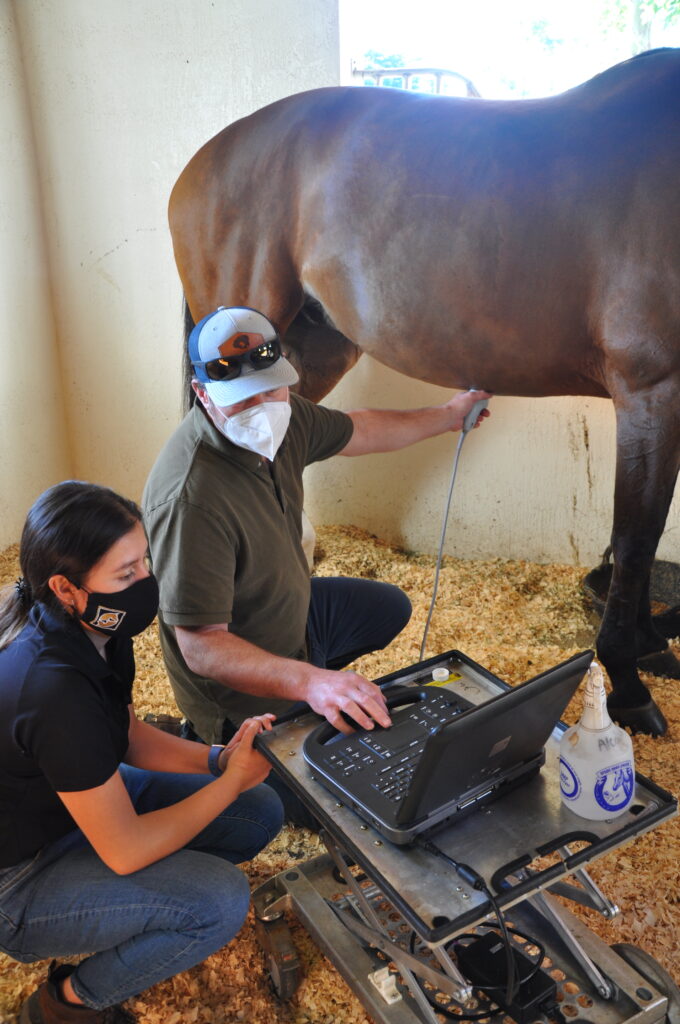

It is common knowledge among trainers that horses with anxious, “stressed-out” personalities seem prone to developing stomach ulcers. Separate from stress caused by riding, changes in surroundings, or even changing stablemates can make a difference in the organisms in a horse’s gut. Even when the feeding program remains consistent, a change in workload or their neighboring stall-mate invites stress and can promote ulcers.
“There is reason to believe that colon ulcers indicate problems in the gut microbiome,” said Dr. Heidmann. “Organisms, both healthy and not, vary between different barns, even in the same region or town, and those differences are also associated with differences in a horse’s microbiome. Even if horses are on the exact same food, with the same hay and turnout schedule, the flora is going to be different due to varying exposure to new microorganisms.” But this doesn’t mean we shouldn’t subject our horses to change. Many competition horses are accustomed to changes in environment and can perform without major gastrointestinal issues. The primary goal is to maintain as much consistency as possible when horses go through geographical changes that may disrupt their gut health.
“The relationship between stress and gut health isn’t as simple as a cause-and-effect relationship, where stress leads to a direct change in the behavior of the bugs, or where a change in flora directly increases a horse’s stress levels. It is a complex, dynamic interaction; it’s a constant feedback loop.”
Dr. Heidmann
It is difficult enough to separate cause from effect when looking at the relationships between gastrointestinal flora and factors like diet, exercise, pre- and probiotics, or supplemental digestive enzymes. But explaining the relationship between horse’s behavior and their GI flora is inherently subjective, and therefore even more difficult to confirm.
“It may seem far-fetched to think that a horse’s behavior might be affected by the balance of flora in their GI tract, but some microbes appear to have developed mechanisms that encourage certain behaviors by producing compounds that mimic the horse’s own neurotransmitters,” reflected Dr. Heidmann. “This can translate into increasing hunger signals or stimulating cravings for certain foods. Some microbes can enhance taste sensation, and others can co-opt a horse’s normal signaling pathways to enhance mood or increase discomfort by slowing gastrointestinal motility. Any or all of these mechanisms may be up or down regulated during changes in the balance of GI flora.”
Still More to Learn
Veterinary science and research still have a long way to go to draw firm associations between illness and the microbiome. According to Dr. Heidmann, “it’s not known yet if the disease is the cause of the change in microbiome flora or if it is the result of a change in the flora, but for sure there is a strong relationship between these things. For now, we don’t yet know if the horse has an unusual balance of organisms because of its problems with chronic colic, or if it is the reverse: that the colic is rooted in an unusual balance of GI organisms.”
With today’s modern scientific tools and research methods, we are closer than we’ve ever been to understanding the dynamics between microbiome and overall health. Comprehensive understanding of the interplay between diet and digestion, between the microbiome and behavior, and between food and flora remains a work-in-progress, but ongoing studies promise to shed light on our current understanding.
In the interim, a consistent regime of diet and exercise, with workload tailored to each horse’s skillset and stage of training, remain the best ways to minimize risk and promote healthy GI flora. “Prebiotics and probiotics and other micronutrients are sometimes necessary,” said Dr. Heidmann, “but the most important things remain hay and sunshine, water and exercise, and consistency most of all.”
Appointment Request
Please fill out this form and our staff will contact you to confirm an appointment.
Meet MRI Manager Cami Glaff
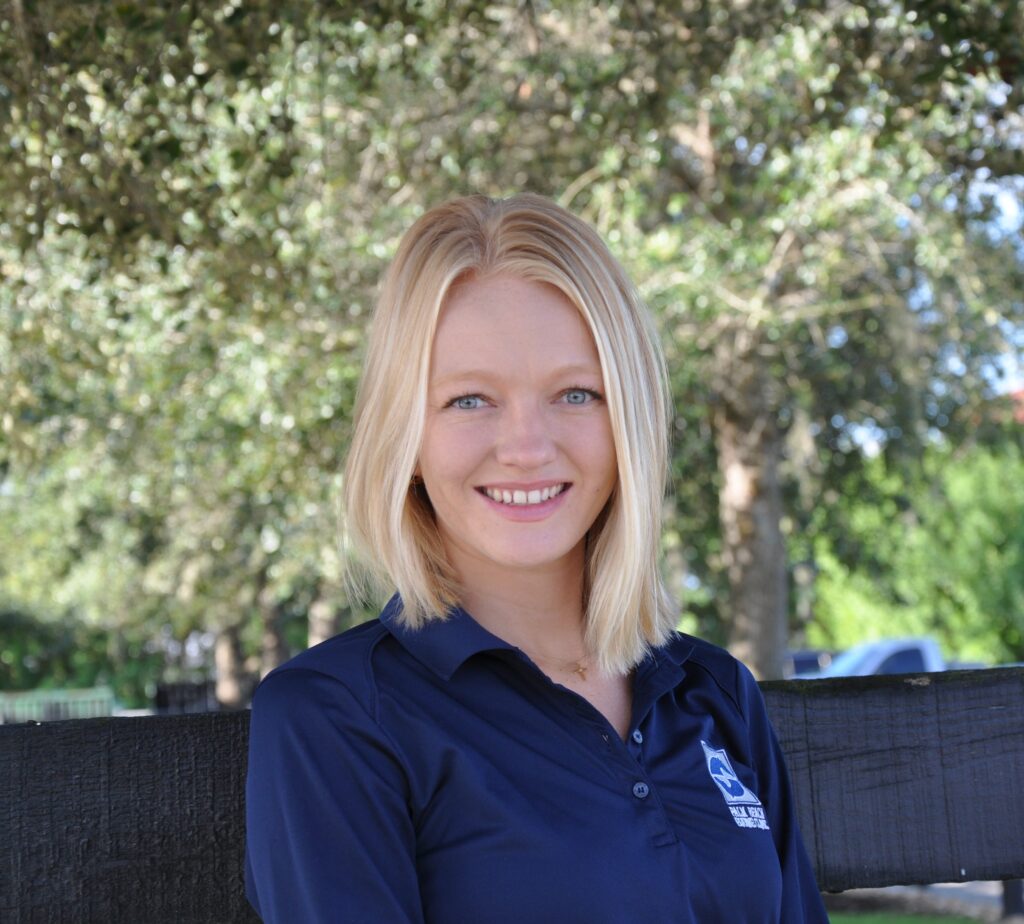
Magnetic Resonance Imaging Manager Cami Glaff
Modern veterinary diagnostic technologies allow doctors to capture highly detailed images which can make a difference in having the most accurate diagnosis and determining the best course of treatment. Capturing these images, however, is another feat in itself. Imaging Technicians work to create a clear and comprehensive diagnostic profile by operating advanced technologies while keeping the patient still, calm, and comfortable. Spearheading management of all Palm Beach Equine Clinic patients for Magnetic Resonance Imaging (MRI) is Camille “Cami” Glaff. A Jupiter, Florida, native, Cami has been an essential team member of PBEC since March of 2016.
Get to know PBEC MRI Manager Cami Glaff

What is your background with horses?
I have been riding horses since the time I learned how to walk. I grew up trail riding and began competing on the hunter/jumper circuits when I was around 10 years old. I pursued a career with horses by studying Business Management with a specialization in Equine Science at St. Andrews University in North Carolina. I represented my school in the saddle by competing on their Intercollegiate Horse Show Association (IHSA) team throughout my four years there. I spent my first year after graduation as a groom and rider traveling to shows on the circuit. However, I discovered that I was more interested in the medical aspect of the horse industry, and I have been with PBEC ever since.
Have you always worked in the Imaging Department?
I joined Palm Beach Equine Clinic as the MRI Technician and quickly advanced to be the Manager of this department. I have also cross trained in other aspects of our imaging modalities so that I am able to properly operate our Nuclear Scintigraphy and Computed Tomography (CT) technologies as well. When I am not with an MRI or Imaging patient, I try to lend a hand by helping in other departments as needed.
What does a typical day as the MRI Manager entail?
When a horse is dropped off at the Clinic for an MRI, I perform a brief exam to note their vitals, place an intravenous catheter, and pull their shoes off. Once we are ready to begin the MRI, it is my responsibility to make sure we acquire the best images possible for our radiologist, Dr. Sarah Puchalski, to examine. The MRI is extremely sensitive to motion, and because of that I have to ensure that the patient is properly sedated, calm and comfortable so that we can obtain sharp images.
Once the horse is settled into position for whichever site is being scanned, I make slight adjustments to the unit’s magnet to make sure it is in the precise location needed. Depending on the site being scanned, such as the fetlock or suspensory origin, and the patient’s compliance, it may take anywhere from one to two hours to completely image the area. Once the scans are completed and are up to our standards, they are sent directly to our radiologist, Dr. Sarah Puchalski, who generates a complete MRI Report for the client typically within 24 to 48 hours. The hospital staff and I monitor the patient to make sure any sedation is properly wearing off to make sure they are safe to return home. It is always a team effort to make sure everyone is happy and that the horse is receiving the best possible care!
What aspects of your job do you most enjoy?
I enjoy being able to work with different horses each day. Every horse has its own unique reaction to being in a new place and being asked to stand very still throughout the scan. Being able to accurately read and handle each horse is a challenge that I appreciate.
I also find it rewarding to be a part of making a difference in a horse’s treatment plan. Acquiring the best possible images that may have the answers a veterinarian needs to make the most effective treatment plan.
When not at PBEC, what do you enjoy doing or where can we find you?
In my free time, I can usually be found outdoors. Whether I am going hiking with my dog Ryder, exploring new biking trails, or relaxing on the beach, I am always happiest outside.
Meet the PBEC Team: Dr. Gretchen Syburg
Servicing clients in Ocala, Florida, throughout the winter season, Dr. Gretchen Syburg is the newest addition to the Palm Beach Equine Clinic Team. Get to know a little about Dr. Syburg by reading on!
What is your background with horses?
I grew up on a farm in southeastern Wisconsin and have had horses since before I can remember. I have ridden in many disciplines but have been part of the hunter/jumper community for the past 15 to 20 years. I am definitely a “horse person” through and through, and I knew from a very young age that I wanted to be an equine veterinarian.
I completed my undergraduate degree at Carroll University in Waukesha, Wisconsin, then obtained my degree in veterinary medicine from the University of Guelph in Ontario, Canada. Upon graduating, I completed an internship at a large referral hospital in California. In California I was able to gain extensive experience in all aspects of equine medicine, especially in complex orthopedic and sports medicine cases. After that, I worked for a practice where I spent my summers in the Northeast, mainly following the show circuits, then winters in Florida before joining Palm Beach Equine Clinic.
Why did you want to become an equine veterinarian?
Growing up on a farm, animals have always been a huge part of my life. My love for animals was evident at a young age, when I would spend my free time in the barn with our variety of animals. I caught the horse bug when I was five, and from then on it was clear my path was to pursue veterinary school. I knew that the equine veterinary industry was where my interest would lie due to the complex and interesting cases I had seen come through our farm.
What area do you specialize in?
I am on the road year-round, spending my summers in southeastern Wisconsin, servicing clients throughout the Midwest. During the winter months, I am in Ocala, Florida, providing care to patients at both HITS and WEC horse shows. Being an ambulatory veterinarian, I offer a very broad range of services to cover the needs of my patients and clients. I focus primarily on sports medicine and the performance horse, but emergency medicine and basic internal medicine cases are another part of my caseload.
What do you enjoy most about your job?
I cherish the relationships that I build, not only with my equine patients, but also with clients. Being a horse person, I really understand the deep connections that my clients have with their horses. Having owned horses myself, I can relate to the trials and tribulations of horse ownership.
I appreciate being able to see all our collective efforts come to fruition when my clients are able to compete their horses or achieve their goals. I admire the moments when clients are grateful for their horse’s health above all else; it truly is a team effort and I love being able to see the reward of a horse in optimal health.
When not treating patients, what do you enjoy doing or where can we find you?

I enjoy spending as much time as possible outside, riding my horse Nike or hiking with my dog Luna. Most of the time you will find me in the barn or enjoying the occasional horse show. I am grateful for the time during the summer with my family in Wisconsin, we still have a small farm and now
Identifying the root of performance issues in equine athletes can be like connecting a puzzle of often-ambiguous signs, or a process of elimination through diagnostics. Veterinarians can exhaust all the tools in their medical arsenal trying to figure out why a horse may be losing muscle mass and stamina or refusing to work, but the answer could be hiding in the horse’s muscle tissue. Palm Beach Equine Clinic’s Internal Medicine Specialist Peter Heidmann, DVM, DACVIM, has a keen interest in connecting these signs and identifying muscle disorders.
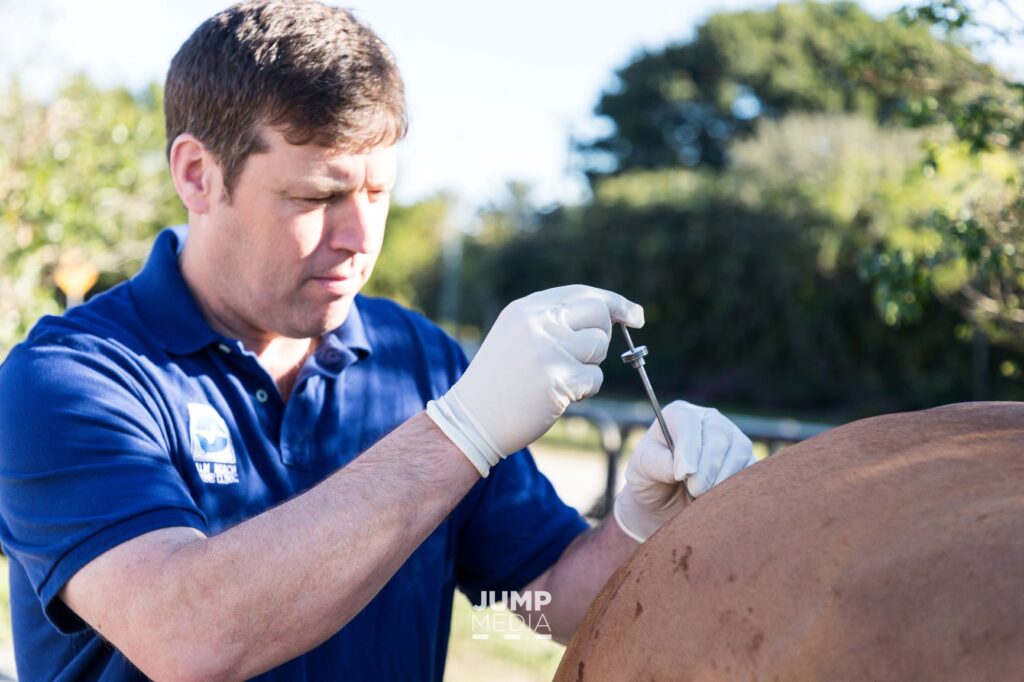
“Correctly diagnosing and treating muscle disorders in horses can be a very rewarding process, because once you develop an effective treatment plan, the horse will usually experience an extraordinary recovery. I’ve had cases where we sent muscle biopsy samples to a pathologist, enacted a treatment plan, and then sent another sample six months later to check our progress. The results were so impressive that the pathologist called to confirm that it was the same horse!”
Dr. Heidmann
Muscle disorders can present with a range of signs from muscle stiffness and pain to extreme cases of muscle atrophy. Most commonly, presentations occur during training and may include pain, stiffness, tremors, and a reluctance to move. Such symptoms usually lead veterinarians to conduct a full lameness evaluation.
“We usually look at mechanics first, and when there is no lameness determined and no joint, tendon, or ligament issues, we can further narrow down the search to determine if there is nerve impingement leading to muscle atrophy,” said Dr. Heidmann, who will often see a horse with such impingement work very well at an extended trot, but lose all power or appear stiff and lame as soon as the gait is collected.
To confirm a horse’s neuromuscular health and proper function, Dr. Heidmann will first run a blood panel to test for abnormal elevations in two enzymes. The first is serum creatine kinase (CK), which is released within just a few hours of muscle damage. Elevations in CK are usually consistent with training, transport, or taxing exercise. The second is serum aspartate transaminase (AST), which is an enzyme that rises more slowly after muscle injury, and can provide a veterinarian with knowledge about the body’s longer-term response.

“If you think of muscle cells as little balloons, once you pop one, CK and AST are released into the blood,” said Dr. Heidmann. “When these numbers are high, we know we have way too many balloons popping all at the same time. Then we just have to figure out why.”
Neuromuscular Biopsies Leading to Diagnoses
The diagnosis of a particular neuromuscular disorder can be challenging, since many of the symptoms are the same, regardless of the underlying disease. After blood testing, neuromuscular disorders can be diagnosed using a muscle biopsy. This minimally invasive, but highly revealing procedure is one that Dr. Heidmann turns to often in order to not only diagnose, but to also provide life and career-saving treatments.


“I usually use a Bergstrom needle, which is used to collect the sample through a tiny site in the horse’s skin. The muscle tissue then falls into a slot in the needle, and is removed to be examined under a microscope,” said Dr. Heidmann, who also says the most common locations for collecting muscle biopsies, depending on the symptoms, include the triceps, top line, hamstring, gluteal muscle, and tail head of a horse. “You can physically see some of the things that aren’t functioning properly even if the enzymes aren’t high.
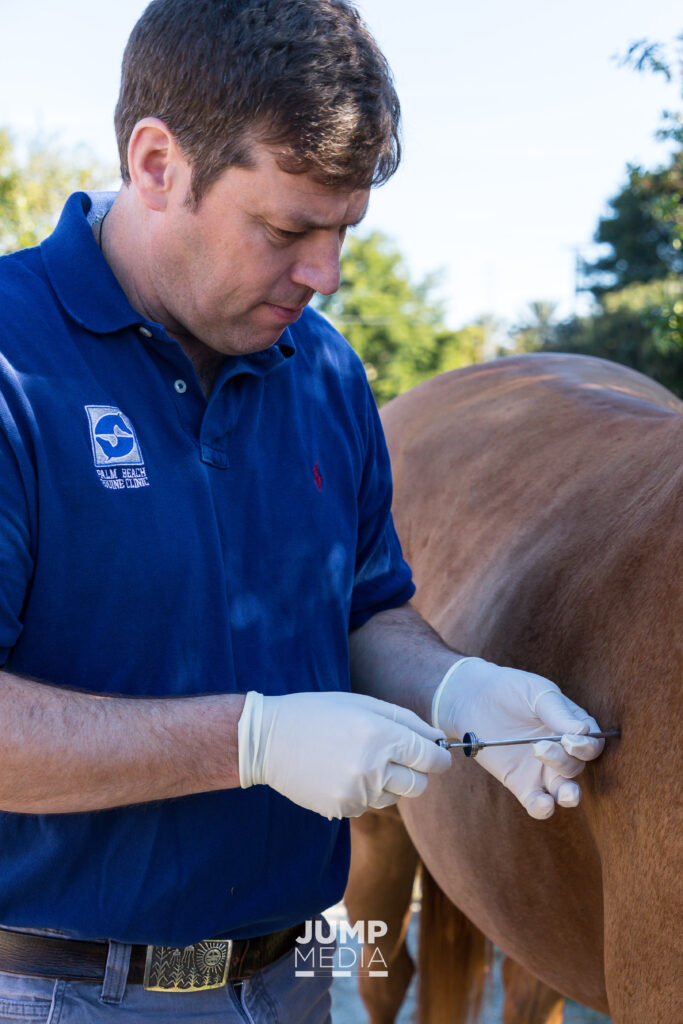
“The beauty of a muscle biopsy is that you are looking at where the nerves come into the muscle, so you can detect abnormal nerve supply to an area while leaving the horse with nothing more than a nick in the skin,” he continued. “Once we see the muscle tissue, we can tell if the horse requires nutritional changes, injections, or other treatments. Non-invasive nerve stimulation is what the future holds for the treatment of many muscle disorders, but it is still an evolving treatment in veterinary medicine right now.”
Once the muscle biopsy is collected, Dr. Heidmann can go to work identifying the problem while the horse immediately returns to work. Non-invasive diagnostics and treatments are the wave of the future in both human and equine medicine. For Dr. Heidmann, neuromuscular biopsies are helping him to look below the surface of a horse’s skin to evaluate, diagnose, and provide treatments without making a single cut.
Learn more about Equine Internal Medicine by clicking here.
Appointment Request
Please fill out this form and our staff will contact you to confirm an appointment.
On-Site Veterinary Care Available at PBIEC Showgrounds Annex Office
Palm Beach Equine Clinic, the premier equine veterinary hospital, will return as the Official Veterinarians of the 2021 Winter Equestrian Festival (WEF) and Adequan® Global Dressage Festival (AGDF) running through April 4 at the Palm Beach International Equestrian Center (PBIEC) in Wellington, FL.

Palm Beach Equine Clinic’s world-renowned facility is conveniently located at the intersection of Southfields and Pierson Roads in the heart of Wellington, just minutes from PBIEC, the Equestrian Village, and the International Polo Club Palm Beach. Palm Beach Equine Clinic is comprised of more than 35 veterinarians, including board-certified surgeons, internists, and a radiologist. The team provides expertise in nearly all aspects of equine health and treatments, such as regenerative therapies, alternative medicine, dentistry, podiatry, and reproduction, and are supported by a dedicated, robust team of technicians and staff. Palm Beach Equine Clinic offers exceptional veterinary care and innovative, individualized care designed to help each horse achieve its full potential in and outside of the competition arena.
With the health and welfare of equine athletes a top priority for the upcoming winter show jumping and dressage competition seasons, Palm Beach Equine Clinic will continue more than three decades of service to both the year-round residents and visiting horses of south Florida. In addition to the full-service equine hospital, Palm Beach Equine Clinic veterinarians will be available each week for all competing horses at WEF and AGDF thanks to a convenient annex office located adjacent to the WEF stabling office on the PBIEC showgrounds. Palm Beach Equine Clinic veterinarians are onsite daily at the annex office to assist competitors throughout the shows with performance evaluations, diagnostics, and treatments, as well as emergency and standard horse care needs.

“Palm Beach Equine Clinic is dedicated to providing services and care to any and all equine patients, from performance-related injuries and sports medicine to colic and internal medicine cases,” said Palm Beach Equine Clinic President Dr. Scott Swerdlin. “The Winter Equestrian Festival and [Adequan®] Global Dressage Festival attract some of the world’s best equine athletes to south Florida. Whether we are treating Olympic-level athletes, or a trusted companion pony, they will receive the most advanced, dedicated care from our veterinarians. It takes a team to achieve that level of service, and we offer the most talented and devoted veterinarians in the business.”
Palm Beach Equine Clinic veterinary advances – available to new, returning, and referred clients – include:
Advanced Diagnostic Imaging
- Board-Certified Radiologist on Staff
- Standing Computed Tomography (CT) Machine
- Standing Magnetic Resonance Imaging (MRI)
- Nuclear Scintigraphy (bone scan)
- Endoscopy
- Digital Radiography and Ultrasonography
Surgical Services
- Three board-certified surgeons
- Recessed surgical suite for standing surgeries and procedures
- Top-of-the-line operating suites
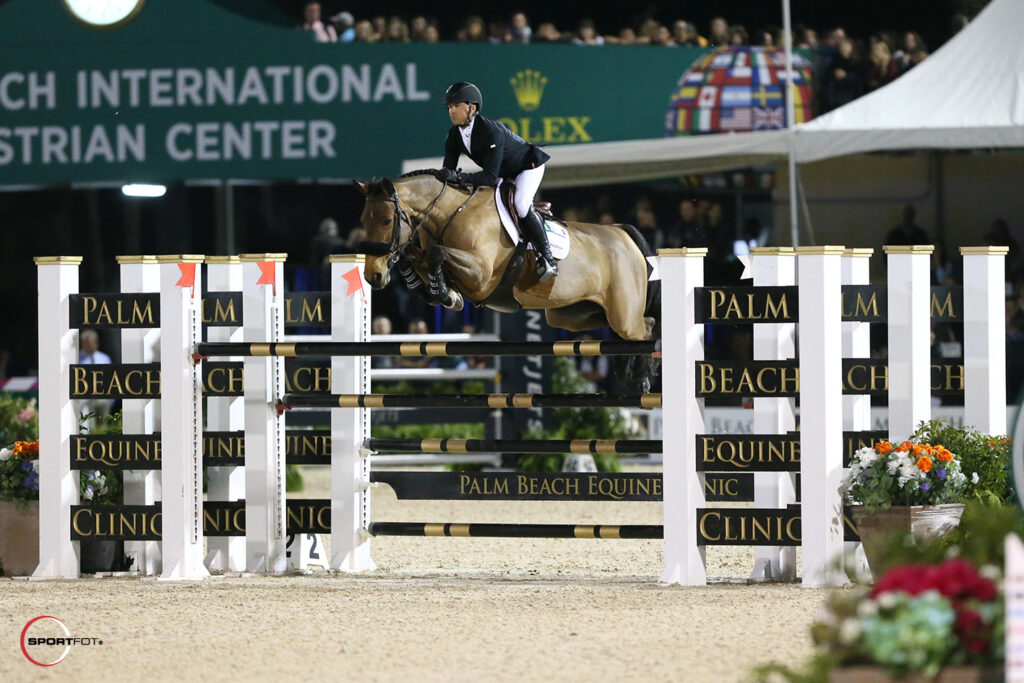
Comprehensive Internal Medicine Packages:
- Internal medicine specialists
- Respiratory evaluations
- Cardiac evaluations
- Gastrointestinal evaluations
- Neuromuscular evaluations
Alternative Medicine Treatments:
- Acupuncture and electroacupuncture
- Chiropractic manipulation
- Chinese herbal medicine
- Laser therapy (Photobiomodulation)
- Extracorporeal Shockwave
Specialty Care
- Regenerative therapies
- Isolation facilities with individual air flow systems
- Renowned sports medicine specialists
- On-site hospital with 24-hour staff
- Dentistry, podiatry, reproduction, and fertility expertise
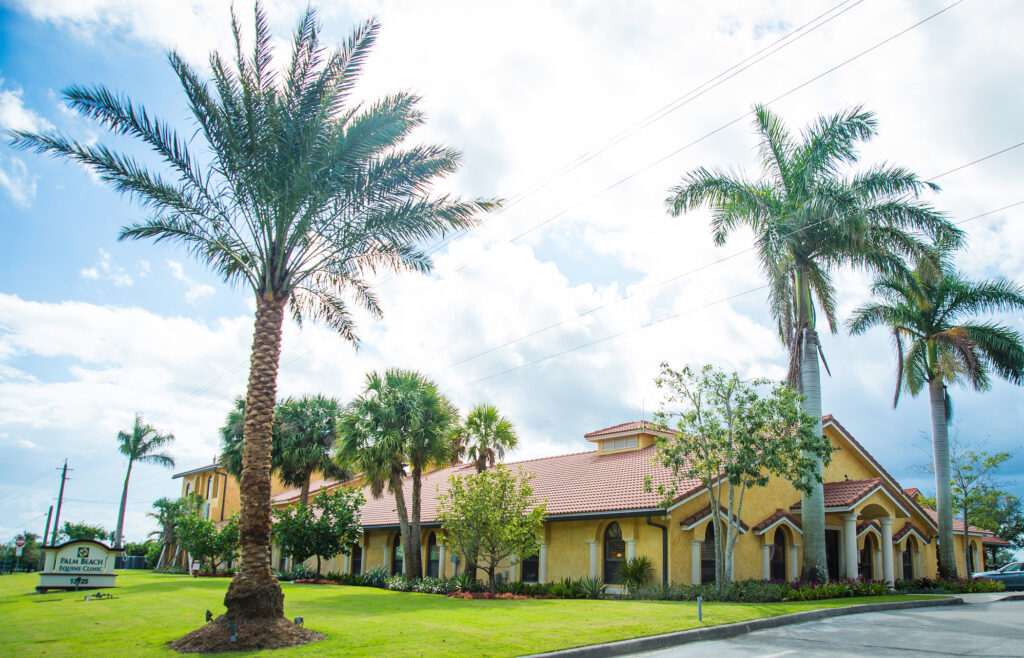
For more information on what Palm Beach Equine Clinic has to offer horses competing at WEF and AGDF, stop by the annex office located next to the stabling office on the WEF showgrounds or call 561-793-1599.
Appointment Request
Please fill out this form and our staff will contact you to confirm an appointment.
